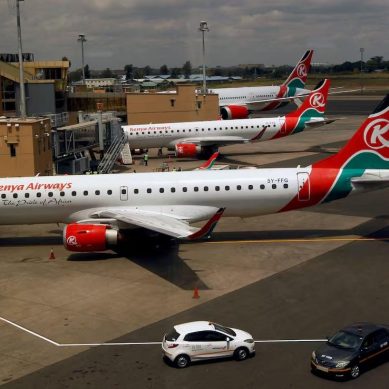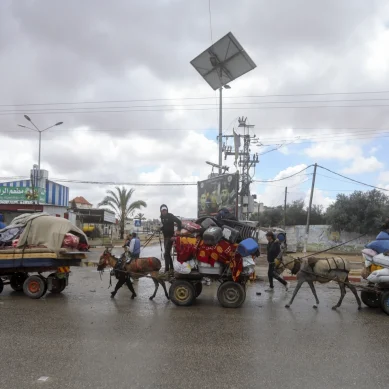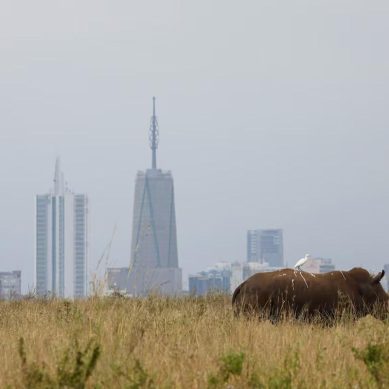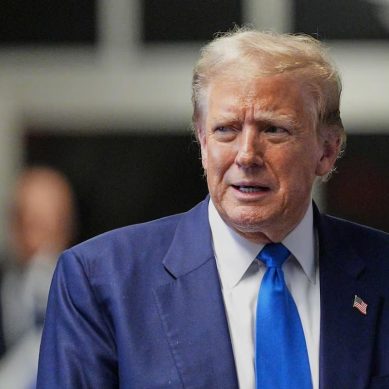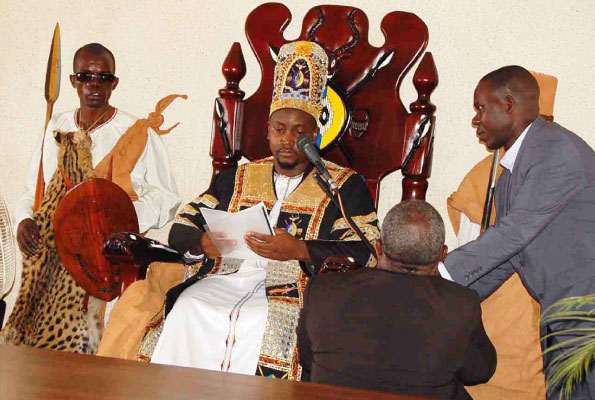
For a long time, the Basoga have been known to be the most docile people of all the indigenous Ugandan groups. They are known not to challenge authority. Hence the saying associated with them: Omwami kyakobye zena bwenkobye (i.e. “What the boss has said is what I say”).
Therefore, since time immemorable, the Basoga have been easy targets for politicians to manipulate, use and abuse to achieve their economic and political ends.
The British colonialists, apart from deploying militarist Semei Kakungulu from Koki to help establish their authority over Busoga, preferred to use the Basoga as clerks and secretaries in various departments and ministries when the extended their influence to cover an expansive area the called British Uganda Protectorate for 70 years.
At independence in 1962 when the Uganda Protectorate was renamed the Commonwealth Realm of Uganda, most high-ranking civil servants were Basoga. This was not surprising. The Baganda who would have dominated civil service had not fully integrated themselves in the colonial State. If I remember well, Basoga Permanent secretaries between 1962 and 1966 included Henry Kyemba, Engineer Zikusooka, and Kate.
Throughout the 70-years of colonial rule, Buganda was agitating for its own independence. Indeed, when the colonialists handed over the instruments of power to the new Executive Prime Minister of the Commonwealth Realm of Uganda State, Apollo Milton Obote, Buganda had just celebrated its own independence on 8th October despite the fact that Kabaka Yekka (Kabaka’s Party) was in union with Obote’s Uganda People’s Congress (UPC) and, together were forming the first post-colonial government and leading the new country to independence from British colonial rule.
Besides, educated Baganda preferred to serve the Buganda Kingdom instead of the Commonwealth Realm of Uganda. This explains why, at the first anniversary of independence on October 9, 1963, when the Commonwealth Realm of Uganda was renamed Uganda, most civils servants in the new state, apart from the whites, were Basoga. For example, indeed, the Basoga replaced the colonists as permanent secretaries in most ministries.
If Buganda had not been more committed to itself than to Uganda, the majority of new Ugandan officers in the central government would have been predominantly Baganda. The majority of the people who gained qualifications from our then elite schools such as Buddo, Kisubi, Namagunga, Gayaza and Mwiri were Baganda and Basoga. At that time Buganda and Busoga were the most financially endowed, thanks to cotton and coffee in Busoga and coffee in Buganda. The parents were able to take their children to school.
Therefore, by the time Uganda got independent, Buganda and Busoga were the most poised in terms of educated Ugandans to dominated the Africanisation of Uganda’s social, political and economic institutions. However, I am saying Buganda tended to avoid full-blown participation in the building of the mega-nation of Uganda, and preferred to build the nation of Buganda. I am characterising Buganda as a nation because that is what it was when the British colonialists arrived in the area, which they first named British Uganda Protectorate, then Commonwealth Realm of Uganda and finally Uganda.
It was a traditional cultural-political nation. So were such entities as Acholi, Ankole, Bugisu, Bukedi, Bunyoro, Busoga, Karamoja, Kigezi, Lango, West Nile, Teso and Toro; a total of 15 that the colonialists reduced to tribes in favour of their meganation.
With the creation of a post-colonial state, it was obvious that a new politics would be ushered in based on political inequality between the centre and periphery. Political inequality is institutionalised is such a way as to give the impression that the former traditional cultural-political nations are depicted as if they are inferior and subservient to the Centre.
That is what centralism means: the centre is sold to the populace as superior to the periphery while the periphery is sold as inferior and subservient to the centre.
This article is about the use and abuse of the Basoga in Ugandan politics. You may wonder why I have given you that extensive background to the topic. Well, I wanted to situate my discussion within that background to strike the point that Basoga have been used and abused by politicians and they and Busoga has not gained much in terms of development, transformation and development. The right phrase to use is that Busoga has de-developed as the politicians who used and abused them gained in political influence and governance.
Colins Dictionary says that if you say that someone uses people, you disapprove of them because they make others do things for them in order to benefit or gain some advantage from it, and not because they care about the other people. However, in a dictatorship it is also possible for some people to strategies to use the dictator for their own benefit or gain at the expense of the whole society.
Abuse of a people, workers, communities has to do with abuse of power or abuse of authority, in the form of “malfeasance in office” or “official abuse of power”, is the commission of an unlawful act, done in an official capacity, which affects the performance of official duties, or the livelihoods of people by denying them access to their resources, quality of life, quality of health, quality of education or wholesome living for your own gain or benefit.
Now elsewhere in this article I said the Basoga have been used and abused by the politicians for their gain in power and influence. Before independence the colonialists used the hereditary chiefs as legislators in the Busoga Lukiiko to make ordinances and policies, which they used to fully colonies the area, spread their power and influence on the area, grab land and enforce people to grow coffee and cotton as well as pay taxes.
Besides, when the colonialists destroyed the Igaga Dynasty in Busambira, Kigulu, they converted the hereditary chiefs into their administrative agents thereby reducing them in terms of sovereignty. As if that was not enough, they established a Presidency over Busoga with a foreigner, Semei Kakungulu, as the first President South of the Sahara.
However, he was not head of State in the same fashion as today’s presidents of countries, but more or less a speaker of the Busoga Parliament (Lukiiko) dominated by hereditary chiefs. So, he presided over the thoughts of the hereditary chiefs, and obviously influenced their thoughts in favour of the colonialists. So if the colonialists used the chiefs, it was through the agency of a foreigner, Semei Kakungulu who diligently served their interests.
When Semei Kakungulu became weak with age and sought to retire, he was replaced, in 1935, by Wako Zibondo to act as the first person from Busoga to preside over the Lukiiko.
However, he did not serve for long as president when the hereditary chiefs suggested that the title was too foreign and should be replaced by a local one. They selected Kyabazinga, which had been used by the Igaga Dynasty’s headquarters at Nnenda Hill to do precisely what Semei Kakungulu was doing: to chair the Lukiiko and ensure that what came out favoured the ruler at Nnenda Hill. Kyabazinga was, therefore, created by the colonialists but by the hereditary chiefs and approved by the colonialists. The institution was to be a political one to be used by the colonialists to achieve their aims and purposes in Busoga, the same way the Presidency was used.
While the Kyabazinga institution manifested itself Busoga characterised by the colonialists as a mere district and the Kyabazinga was no more than a political functionary of the colonialists in the Busoga Lukiiko. This continued to be the case until 1962 when the new independence constitution changed the status of Busoga from a mere district to The Territory of Busoga with semi-federal status.
However, this did not put Busoga at par with Ankole, Buganda, Bunyoro and Toro, which were full-fledged monarchical federal entities, with a degree of sovereignty over their resources and people. They share resources and royalty with the central government in agreed ways. Even the services were shared. Genuine decentralization obtained.
During his earlier reign as Kyabazinga, Sir William Wilberforce Kadhumbula Gabula Nadiope II liberated Kyabazingaship from the Busoga Lukiiko, made it Kyabazinga of Busoga, appointed a Katikiiro like that of Buganda and tried to make what was a political institution a hereditary institution. He failed to achieve the latter because Bulamogi and Bukono vehemently opposed the idea. If he had succeeded, then all future Kyabazinga’s would come only from Bugabula County. His failure explains why Kyabazingaship remained a politically elective office in which some politicians at the centre, including the president of Uganda have often had vested interests and influenced outcomes.
Apparently, the centre has often used the Kyabazinga to serve its interests. When Apolo Milton Obote wanted to proliferate his political influence in Busoga in the late 1950s and the early 1960s, he used Sir William Wilberforce Kadhumbula Gabula Nadiope II to bring most Basoga, he helped him to become vice president of his new party, the Uganda People’s Congress (UPC), and even was behind the ouster of Henry Wako Muloki from Kyabazinga of Busoga in 1962, so that Nadiope could become Kyabazinga again just before independence of the Commonwealth Realm of Uganda.
Obote went on to appoint him minister of internal affairs to enhance his political influence. When it came to election of the first post-colonial president of Uganda, most Members of Parliament (MPs) wanted Nadiope II but Obote stepped in and was able to convince the MPs to elect Sir Edward Walugembe Muteesa II of Buganda and Nadiope II as vice president. Obote was interested in the survival of the UPC/KY alliance, which formed the postcolonial government.
However, it was a matter of time before Muteesa II and Nadiope II plus some ministers, including Ngobi, Magezi, Ibingira, Lumu and Kirya, plotted to overthrow Obote. Then the political marriage between UPC and KY came to an end. So did Obote’s close association with Nadiope II in ensuring UPC dominated the political space in Uganda. Obote had successfully used Muteesa II and Nadiope II to rise to the premiership of Uganda. But thanks to the plot, he did not need them anymore. Eventually Muteesa II died in exile and Nadiope II was imprisoned but died soon after Idi Amin released him from Luzira Prison. It was extremely difficult for him to survive outside power.
I can go on to show how Basoga are used by politicians at the centre. In the 1960s Obote I, Apollo Milton Obote used Basoga like Henry Kyemba, Engineer Zikusooka and others to govern. In Obote II used Basoga such as Kirunda Luwuliza, Sam Tewungwa and Patrick Mwondha to weather the storm of the Democratic Party, which had captured his once strong UPC political base in Busoga. Virtually all the eight or nine MPs from Busoga were DP. However, Obote used Kirunda Luwuliza to convert most of them, except Prof Yoweri Kyesimira (Iganga Central MP) to defect to UPC and restore his political base.
Some of the MPs that defected were Dr David Kazungu (Kamuli Central MP), Dr E.G.N. Muzira (Jinja East MP), Joh Magezi (Iganga North West MP), Engineer M.P. Batumbya (Kamuli West MP), D.J.K. Nabeta (Iganga South West MP), J.K. Mpaulo (Kamuli East MP). Alex Waibale (Jinja North West MP) did not initially join Obote’s Party but when politicking started in 1985, he presented to the electorate as a potential UPC candidate.
During the Tito Okello-Basilio Okello short-lived military Junta, Dr David Kazungu was appointed minister for relief and rehabilitation. The Junta used him to confer legitimacy to the military regime. In President Tibuhaburwa Museveni-led NRM government, he served as Uganda’s ambassador to France, National Agricultural Advisory Services (NAADS) national chairman, Kamuli District Chairman, Kamuli District Service Commission Chairman and Kamuli General Hospital Health Management Committee Chairman. In those capacities, he helped enhance the NRM regime’s legitimacy
When President Tibuhaburwa Museveni decided to reintroduce Kyabazingaship in Busoga in 1993, he used two of his most influential cadres in Busoga then, Kirunda Kivejinja and Rebecca Kadaga, to influence who of Gabula Nadiope (then a very young youth) and Henry Muloki, became the Kyabazinga. Reportedly an agreement was reached under their influence that Muloki became the Kyabazinga and that Gabula Nadiope would become one after him. Indeed, that is what happened when Muloki passed on.
Kirunda Kivejinja and Kadaga were effectively used to keep members of the Igaga Clan out of the Kyabazinga race. I was told by a person close to the Igaga Clan close to the lineage of rulers (38 of them) the list of the rulers was confiscated by either Kadaga or Kirunda Kivejinja from one Mzee called Kisambira who was the custodian of the list. If culture is the main preoccupation of the institution of Kyabazinga, then it should be interested in the return of the list of rulers at Nnenda to the Igaga Clan.
What I remember is that Henry Wako Muloki was used by the NRM government to defeat environmentalists to have Bujagali Falls Site subjected to destructive development for a hydropower facility, thereby erasing the potential and actual tourism benefits of the site to Busoga.
Today, Busoga is firmly under the NRM in the sense that virtually all the 38 MPs from the region are NRM. As if by design they collectively never challenge the president’s choices. Theirs is a conspiracy of silence on many issues concerning Busoga. For example, at the moment the majority if not all are silent on the issues of sugarcane zoning, gold and rare earth minerals, which are critical to Busoga as a region. It is as if they are being used by the status quo not to make the issues political yet clearly the three issues have emerged as political resources in Busoga.
The Basoga are only used as voters to elect the president without expecting political equality or quality social services. This is certainly a case of abuse of the Basoga. It excludes them from meaningful development, transformation and progress in a complex century. The status quo is gaining and Busoga and the Basoga are losing.
For God and My Country.
- A Tell report / By Prof Oweyegha-Afunaduula, a former professor in the Department of Environmental Sciences of the Makerere University, Uganda
